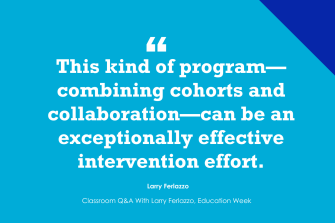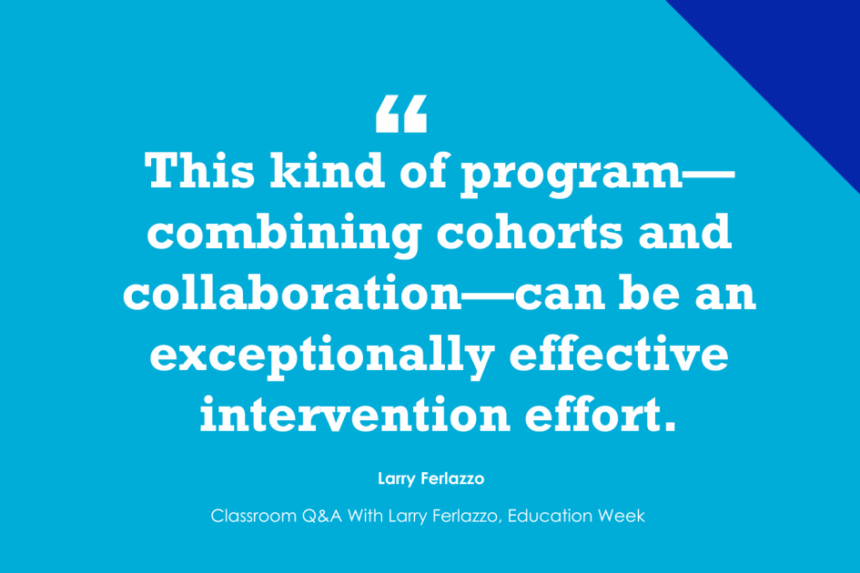Over the past two months, I’ve been doing a long public goodbye—retiring from my teaching career, not from writing this blog.
I’ve shared a number of reflective posts based on my 23 years of teaching, ranging from how to keep educators in the classroom, why I stayed at one school for my career, things I’ll miss and not miss, and key pieces of advice I offer all teachers. Ed Week even sent a videographer to my school to document my final days there (and shared even more video snippets here).
And now, it’s time for what I think may be my last commentary about my retirement—which I’ve certainly stretched it out!
I’d like to share what I believe is the most effective teaching strategy—by far—that I’ve done or seen and which I believe could be tremendously effective if duplicated.
It targeted long-term English learners. However, I’ve always said that good teaching for ELLs is better teaching for everybody else, so I’m convinced it could be used to support English-proficient students, too.
Long-term English learners are students who have been classified as ELLs for six years or more and make up a significant portion of the nation’s English-learner population.
Six years ago, I had an idea for how our school could successfully support these students, and our school leadership supported it unreservedly.
We identified a group of 20 such students who were entering 9th grade, and they would take a support class with me. We also identified a different group of 20 who would serve as the control group.
The 20 in my class would stay together during the school day taking the same academic classes, with their respective teachers, though there would be other students in those classes, too.
Each of their content teachers would send me a paragraph once a week. In that paragraph, they would tell me what they would be covering the following week and what prior knowledge would be helpful for students to know to help them access that content.
In that preceding week, my class would have engaging lessons focused on the students developing that prior knowledge. When it was outside my area of expertise, which was often the case with math, we would watch appropriate Brainpop movies and play reinforcing games.
My support class also functioned as a de facto “advisory,” with us doing social-emotional-learning lessons, students reflecting on what they were learning in their other classes, and, because of my ability to speak Spanish, I stayed in regular communication with their parents or guardians.
It was an extraordinary experience for all of us. My students, who in past years often felt behind academically, now were typically the most prepared students in all of their classes.
We worked closely with our district’s central office to develop assessments to monitor student progress. Students in our support class scored much higher in every measurement that we tracked—academic, disciplinary, attendance, etc.—than the control group.
In fact, nearly half the students in the support class joined our school’s International Baccalaureate Diploma Program the following year.
You can read an extensive description of what we did here.

We repeated the program the following year with a different teacher. It was well on its way to similar success when the COVID-pandemic struck. Afterward, fiscal challenges prevented our school from continuing the class. We couldn’t spare a period or two for a teacher to cover the class.
Obviously, as education researcher Dylan Wiliam has said, “Everything works somewhere; nothing works everywhere.”
Nevertheless, I’m convinced that this kind of program—combining cohorts and collaboration—can be an exceptionally effective intervention effort for English-learner and English-proficient students alike in many situations.
It does take creativity in scheduling students, a little extra work from teachers, and making the time in a school’s schedule for these kinds of support classes.
I think the payoff is worth it.







